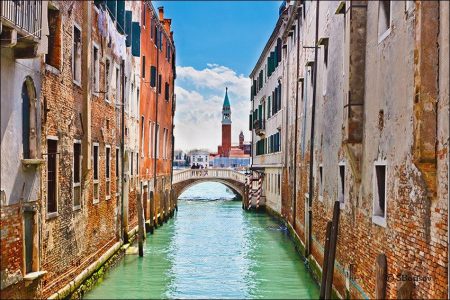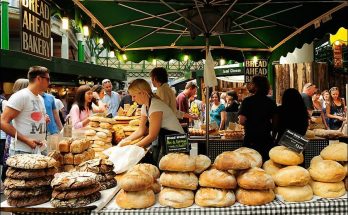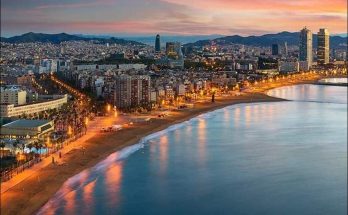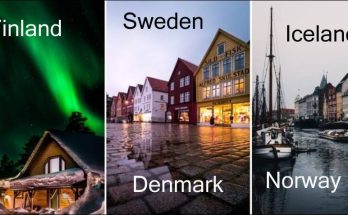From the air Venice looks like an inundated city. Colored patches of sea grass wave beneath the shallow water of the lagoon. The irregular clusters of houses on their hundred islands seem afloat. The white stone bridges form a broken pattern over the murky waters of the innumerable canals. On the piazzas paved with bleached stone slabs, carved wellheads gape black, that once supplied water for the city’s needs. The various greens of the vegetation mingle with the gray and white of stone and the mellowed rose color of brickwork.
The fascinating mixture of land and water long attracted book illustrators and map makers to show the city from above. Jacopo de’ Barbari’s magnificent woodcut, made in 1500 and measuring over four feet by nine, remains one of the most important views as well as the most effective of the city. Even at that time, the commercial value of such a storytelling document was grasped, and a German merchant living in Venice at once purchased a four-year copyright for its publication. The city spreads out like a flattened hand with fingers extending toward the east, where a long sandbar guards it from the open waters of the Adriatic. The Canal Grande traces its familiar S. The population at that time, estimated at somewhat over 150,000, did not overcrowd the city as it does today with more than two and a half times that number.
Many garden patches are visible. The low-lying sandbanks are empty, with an occasional boat drawn up upon them. Yet many of the monuments that make Venice what it is today stood there in 1500. The buildings facing the Canal Grande already display the Byzantine, Venetian-Gothic, and Renaissance styles side by side, which later accommodated also the Palladian and the Baroque in splendid harmony. The only bridge that spans the main artery of the town is of wood, with a center section that can be lifted for the passage of ships. For the magnificent Rialto Bridge of stone was not built until nearly a century later.
Many of the big churches, each with its campanile, or bell tower, can be recognized among blocks of dwelling houses. While full attention was paid by the draftsman to the island of San Pietro at the entrance to the arsenal, to the Giudecca on the south, and the Isola di San Giorgio Maggiore at the entrance to the Canal Grande, the focus is on the Ducal Palace and the Basilica of San Marco. In the foreground, heavy masted vessels clog the harbor, with an empty space along the quay at the end of the Piazzetta where gondolas ride. A gigantic Neptune is mounted on a monster dolphin. His left hand holds a chain to harness the animal, and his right, a banner proclaiming the port to be his residence.
Views: 373



